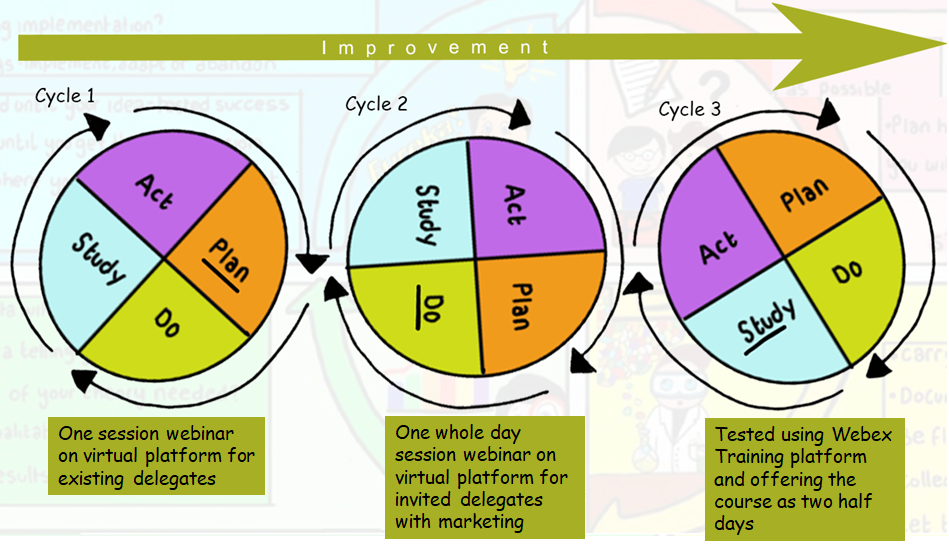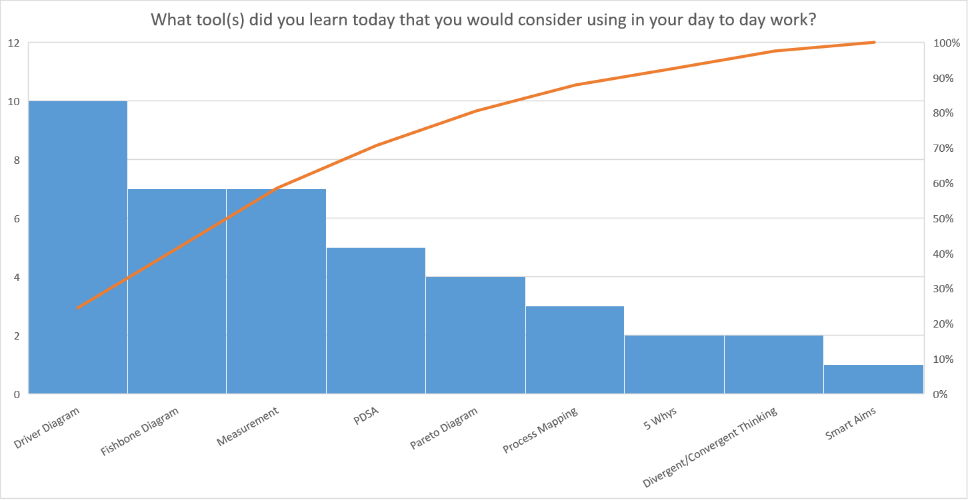
QI Department ‘ Virtual Pocket QI – Webinar Test’ Cycle 3
8th June 2020
With colleagues and service users spending more time at home during the lockdown, the QI Department decided to offer a ‘Virtual Pocket QI’ webinar every two weeks. People were given the option of staying for the full day or splitting the course across two days, which is how it was previously run in person. The theory was that this would suit those with stamina as well as those who would like time to digest different parts of the course and those who work morning or evening shifts.
We had used the Plan, Do, Study, Act (PDSA) cycle to test the webinar in March and April and here is our third iteration. This method of building on previous learning is illustrated on a PDSA ramp (Figure 1).
Plan: Plan the test (including the plan for collecting data)
We planned to test the use of the WebEx Training platform within our team and predicted that we could use it for the webinar. We improved the clarity of some of the content following feedback from the previous session. The data collection plan to use Microsoft Forms remained the same.
- Who: The webinar was facilitated by one of the Associate Directors, five Improvement Advisors and one technical support team member.
- What: We advertised the event and how to register, updated the slides and for each module we assigned facilitators and back-up facilitators with two weeks’ notice.
- How: Facilitators met on the WebEx Training platform to try out the functions. It was smooth in handing control from one presenter to the next, but delegates could not write in the chatbox or unmute themselves. We decided the platform was not interactive enough for us to use until we establish whether these restrictions can be overcome.
- When: 12th May 9:30 – 1 pm and 2 pm – 4:30.
- Data: number of delegates accepting the invitation; the number of extra signups through ELFT communications, qualitative feedback from the delegates and the facilitators.
 Do: Run the test on a small scale. What happened?
Do: Run the test on a small scale. What happened?
- We used WebEx Meeting Pro to host the session.
- A total of 35 joined for both sessions, 26 attended part 1 and 2 and 9 people attended only for the morning session.
- We started by asking delegates what they would like to change about their service.
- We hosted the slides from a computer at ELFT headquarters.
- Facilitators joined the webinar for their teaching modules.
- We nominated a member of the team to monitor and respond to the chatbox.
- We added in 5 minute breaks about once an hour.
 Study: Analyse the results and compare to the predictions
Study: Analyse the results and compare to the predictions
- There was good communication with participants who were experiencing technical issues.
- All the feedback about the delivery, content and interactivity was very positive.
- Running Part 1 in the morning and Part 2 in the same afternoon is time-efficient, meaning we are able to offer the course every 2 weeks.
- We had 7 participants who attended part 1 without registering and 7 participants attended part 2 without registering
- The slides were blurry, making them difficult to read. This could have been because of the host’s screen resolution.
- There were pixelated boxes on the screen to hide part of the host’s display, which delegates found distracting.
- Some participants experienced audio technical issues with the PDSA video.
- The feedback QR code still showed Day 1 instead of part 1, which could have been confusing.
- The celebration of this event was noticed on Twitter and the QI Department has been invited to present at a QI Community webinar on how to deliver virtual training.
- One of the video links would not play from the host’s computer, so the presenter simply posted the link in the chat and gave delegates time to watch it together.
 Act: adapt, adopt or abandon change ideas
Act: adapt, adopt or abandon change ideas
- To overcome some of the problems, such as the pixelated boxed showing on the screen, the team will work with people from the WebEx Training platform to establish how it could work for us.
- The background behind the text will be changed to light colours so it is easy to read.
- We will animate the driver diagram slide to make it more engaging.
- The feedback QR code will be changed to ‘Part 1’ and ‘Part 2’.
- Some of the facilitators will be presenting their learning and experience of virtual training at a QI Community webinar.
Figure 1. Rapid Cycle Ramp
Figure 2. Pareto chart demonstrates which tool the delegates would use in their day to day work
Figure 3. Facilitator’s feedback
Figure 4. Delegate’s feedback
Figure 5. Key Learning and Recommendations
Most Read Stories
-
Why is Quality Control important?
18th July 2018
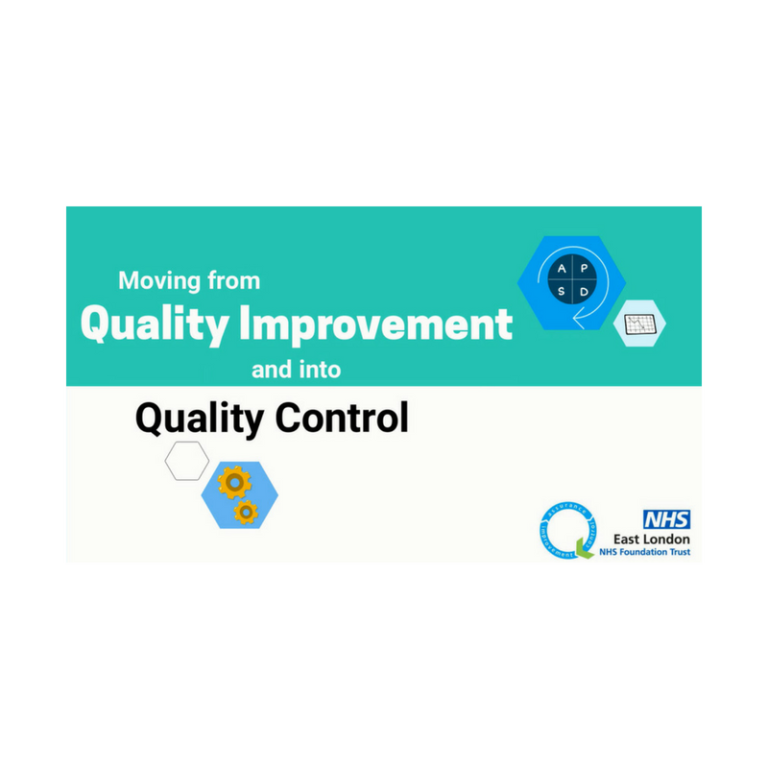
-
An Illustrated Guide to Quality Improvement
20th May 2019
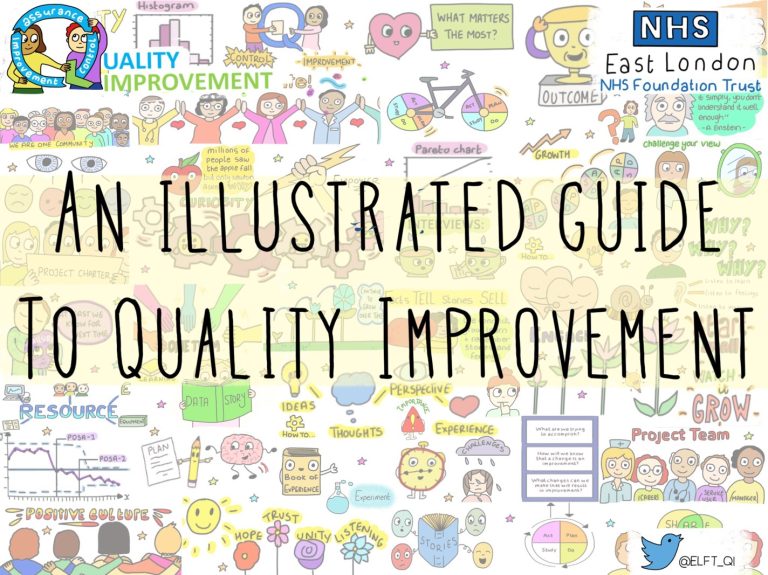
-
2016 QI Conference Poster Presentations
22nd March 2016
-
Recognising Racism: Using QI to Help Take Action
21st January 2021
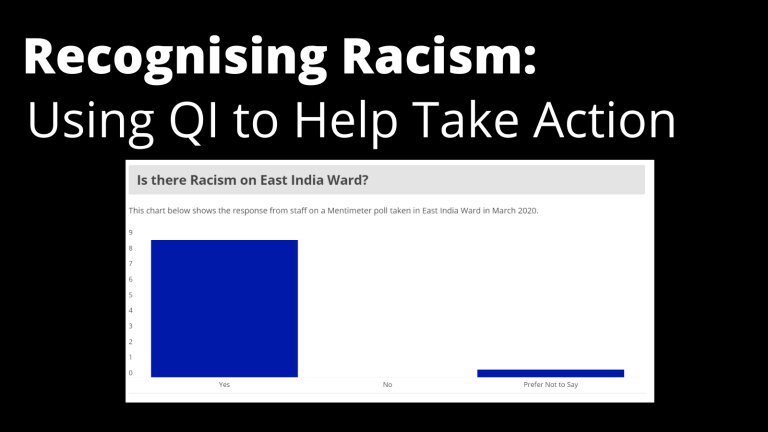
-
Using data enabled us to understand our problem
31st March 2023

-
QI Essentials: What does a Chief Quality Officer do?
18th March 2019

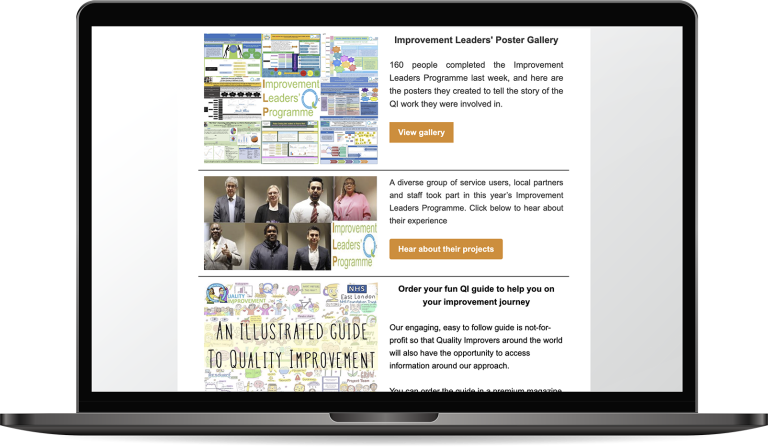
Follow QI on social media
To keep up to date on the latest concerning QI at ELFT, follow us on our socials.






